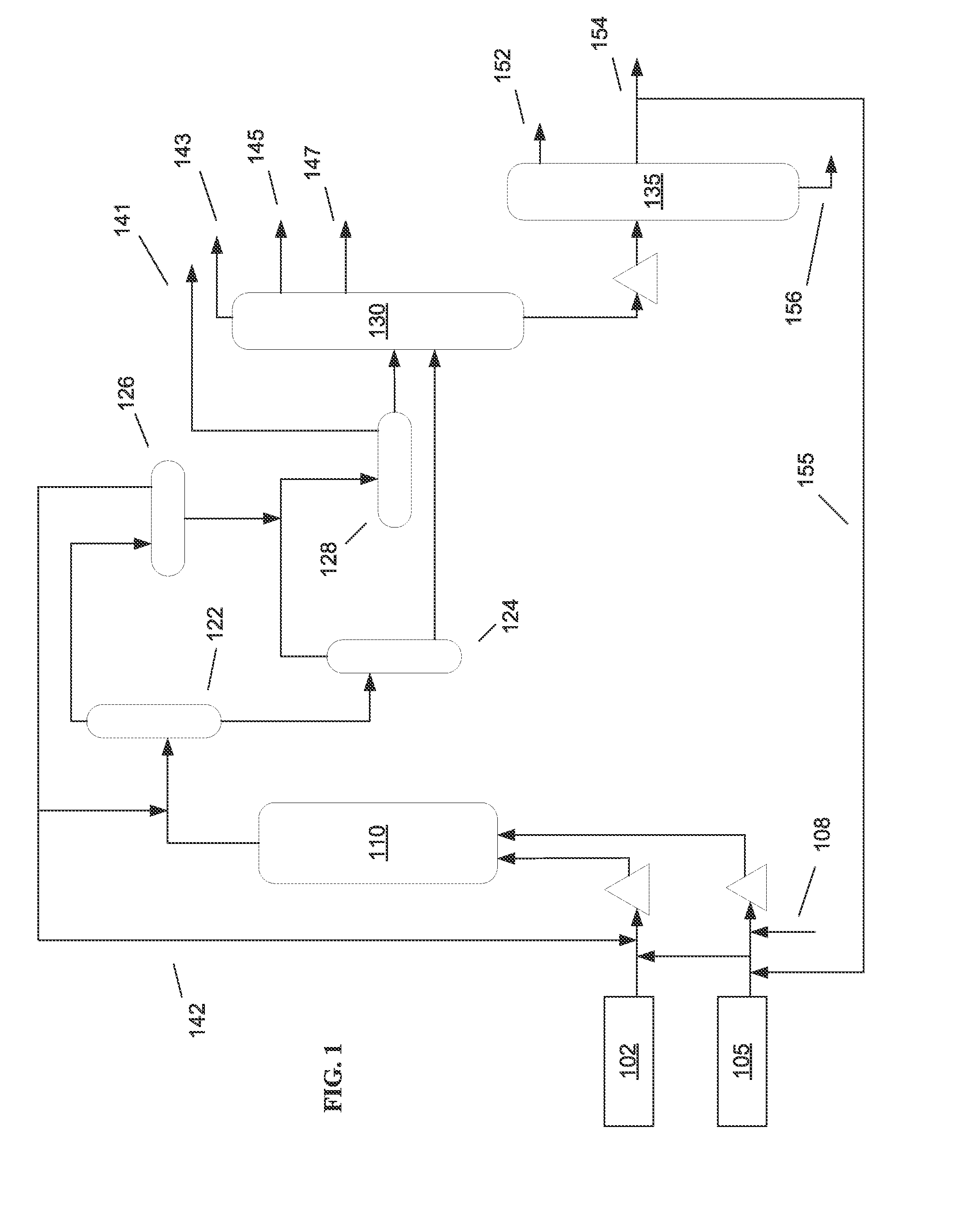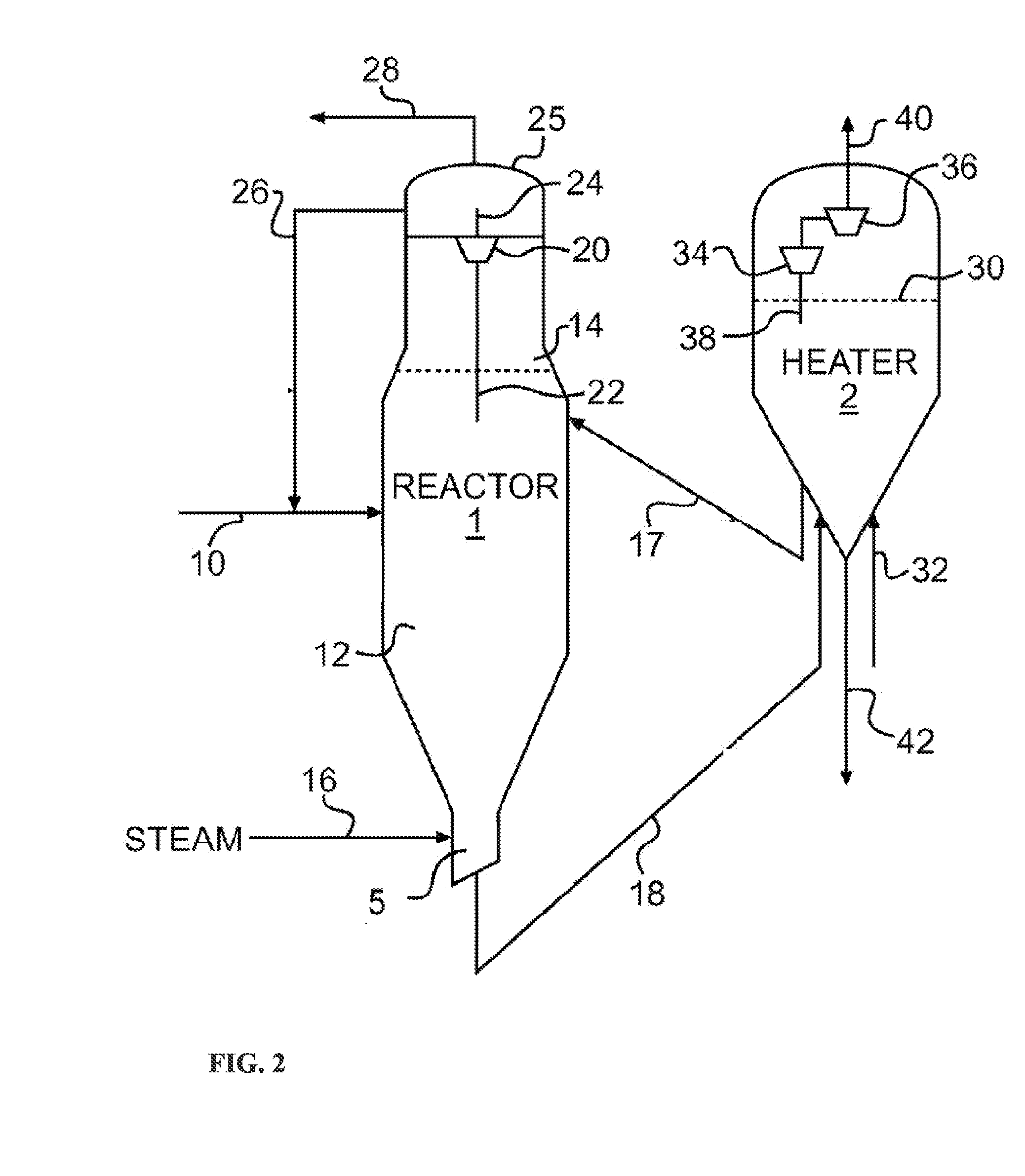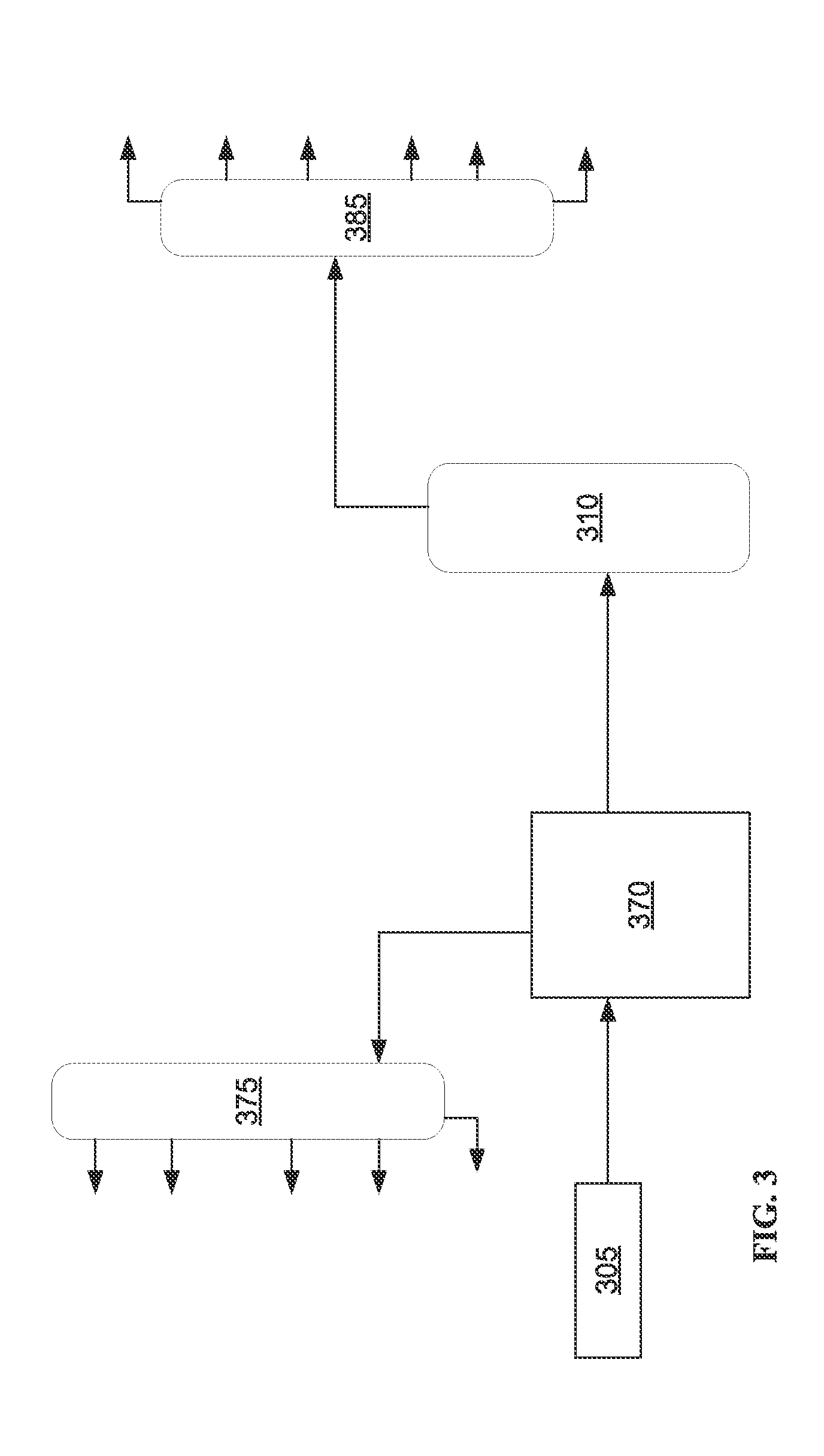Slurry hydroconversion and coking of heavy oils
a technology of heavy oil and hydroconversion, which is applied in the direction of thermal non-catalytic cracking, treatment with plural parallel stages, naphtha treatment, etc., and can solve the problem that slurry hydroconversion is also an expensive refinery process
- Summary
- Abstract
- Description
- Claims
- Application Information
AI Technical Summary
Benefits of technology
Problems solved by technology
Method used
Image
Examples
example 1
Comparison of Coking and Slurry Hydroconversion for Light and Heavy Feeds
[0059]The benefits of using both coking and slurry hydroconversion for treatment of heavy feeds can be shown based on a comparison of the liquid yields for coking and slurry hydroconversion on feeds with different Conradson carbon residue values. Table 1 shows properties for vacuum resid fractions generated from crude oils from two different sources. Feed 1 in Table 1 represents a lighter feed while Feed 2 corresponds to a heavier feed. As shown in Table 1, the Conradson carbon residue for Feed 1 is 24.1 wt % while the residue value for Feed 2 is 33.5 wt %.
TABLE 1Feed PropertiesVacuum Resid PropertiesFeed 1Feed 2Specific Gravity1.0351.082Sulfur, wt %4.556.22Nitrogen, wt %0.380.88CCR, wt %24.133.5Nickel, wppm27.1182.4Vanadium, wppm94.5463.6Asphaltenes, wt %9.030.5Cut Vol %, 975° F.+18.335.4(524° C. +)Cut Vol %, 1050 F.+14.129.1(566° C. +)
[0060]Table 2 shows the resulting products from processing the vacuum resid...
embodiment 1
[0081]A method for processing a heavy oil feedstock, comprising: providing a first heavy oil feedstock having a 10% distillation point of at least about 650° F. (343° C.) and a first Conradson carbon residue wt %; providing a second heavy oil feedstock having a 10% distillation point of at least about 650° F. (343° C.) and a second Conradson carbon residue wt %, the second Conradson carbon residue wt % being at least 5 wt % greater than the first Conradson carbon residue wt %; coking the first heavy oil feedstock under effective coking conditions to form at least a first plurality of liquid products and coke; and exposing the second heavy oil feedstock to a catalyst under effective slurry hydroconversion conditions to form at least a second plurality of liquid products, the effective slurry hydroconversion conditions being effective for conversion of at least about 80 wt % of the second heavy oil feedstock relative to a conversion temperature, or at least about 90 wt %, or at least ...
embodiment 2
[0082]The method of Embodiment 1, wherein the first heavy oil feedstock and the second heavy oil feedstock are formed by performing a membrane separation of a third heavy oil feedstock.
PUM
 Login to View More
Login to View More Abstract
Description
Claims
Application Information
 Login to View More
Login to View More - R&D
- Intellectual Property
- Life Sciences
- Materials
- Tech Scout
- Unparalleled Data Quality
- Higher Quality Content
- 60% Fewer Hallucinations
Browse by: Latest US Patents, China's latest patents, Technical Efficacy Thesaurus, Application Domain, Technology Topic, Popular Technical Reports.
© 2025 PatSnap. All rights reserved.Legal|Privacy policy|Modern Slavery Act Transparency Statement|Sitemap|About US| Contact US: help@patsnap.com



